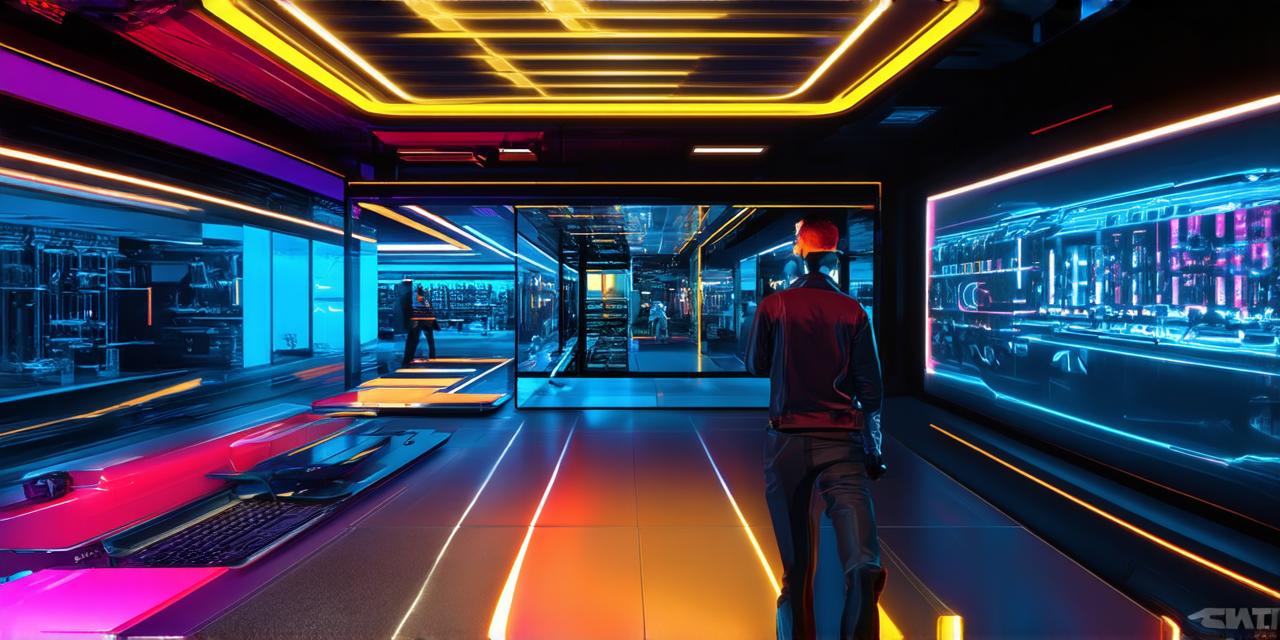Augmented reality (AR) is a technology that overlays digital information onto the real world, creating an interactive and immersive experience. In recent years, AR has become increasingly popular in e-commerce, with online stores using it to enhance the shopping experience for customers.
AR in Online Retail: A Growing Trend
Online retailers are increasingly utilizing AR technology to improve the shopping experience for their customers. AR allows customers to visualize products in a more realistic way, making it easier to make informed purchasing decisions. This technology also enables customers to interact with products in a more engaging and interactive way, creating a more memorable shopping experience.
One example of an online retailer using AR is IKEA. The furniture store has developed an AR app that allows customers to visualize how different pieces of furniture would look in their home before making a purchase. This app uses the camera on a customer’s smartphone to scan the room and then overlays 3D models of the furniture onto the real world, allowing customers to see how the products would fit into their space.
Another example is Sephora, which has implemented an AR feature in its mobile app. This feature allows customers to try on makeup virtually, using their smartphone camera to create a virtual mirror image. Customers can then select different makeup products and apply them virtually, allowing them to see how they would look on their face before making a purchase.
The Benefits of AR in Online Retail
AR technology offers a number of benefits for online retailers and their customers. For retailers, AR can help increase sales by providing customers with a more engaging and interactive shopping experience. It can also help reduce the number of returns, as customers are able to visualize products in a more realistic way before making a purchase.
For customers, AR technology can make the shopping process more convenient and efficient. By allowing customers to visualize products in a more realistic way, they are better able to make informed purchasing decisions. This can save time and reduce the number of returns, as customers are more likely to be satisfied with their purchases.
AR technology also enables customers to interact with products in a more engaging and immersive way, creating a more memorable shopping experience. This can help build brand loyalty and increase the likelihood that customers will return for future purchases.

Case Studies: How AR is Transforming Online Retail
There are many examples of how AR technology is being used in online retail to enhance the shopping experience for customers. One example is Lululemon, which has developed an AR app called “Lululemon Magic Mirror.” This app allows customers to try on different outfits virtually, using their smartphone camera to create a virtual mirror image. Customers can then select different outfits and see how they would look on their body before making a purchase.
Another example is Wayfair, which has implemented an AR feature in its mobile app. This feature allows customers to visualize how different pieces of furniture would look in their home before making a purchase. Customers can use their smartphone camera to scan the room and then see 3D models of the furniture overlaid onto the real world.
The Future of AR in Online Retail
As AR technology continues to evolve, it is likely that we will see more and more online retailers utilizing this technology to enhance the shopping experience for their customers. In the future, we may also see AR being used in other ways beyond product visualization, such as virtual try-on experiences for clothing and makeup.
